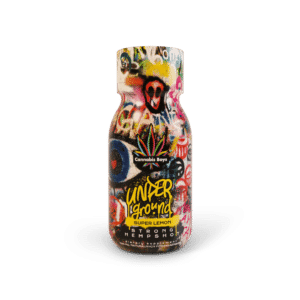Hemp cannabinoids may be an alternative to or complement other forms of neuropathic pain treatment and enable the reduction of doses of strong painkillers. According to data collected during a retrospective study, dried hemp containing CBD and THC relieved pain and improved sleep quality in patients with chronic neuropathic pain. The advantage of hemp, according to the study authors, is its quick action and the fact that it causes fewer side effects than conventional drugs.
Dried hemp with THC relieves neuropathic pain: new study
A retrospective study conducted by researchers at the University Medical Center Hamburg-Eppendorf examined the effects of cannabis treatment on people suffering from chronic neuropathic pain. The aim was to evaluate the therapeutic benefits of medical cannabis treatment as an alternative therapeutic option with few side effects.
The results, published in the journal Medical Cannabis and Cannabinoids, are based on the evaluation of 99 German male and female patients aged 20 to 81. Each of these people experienced additional symptoms associated with neuropathic pain, especially sleep problems.
People participating in the study inhaled medical herbs with a THC content of between 12-22%, in a daily dose of 0.15 to 1g. Scientists collected data on pain intensity and sleep disorders, assessed the patients' general condition and how they tolerated high-dose cannabinoid therapy. Participants were followed for 6 months.
At the beginning of treatment, the average pain level among study participants was 7.5 on a 10-point scale, with 96% of people rating their pain level above 6. Within the first 6 weeks of cannabis therapy, the average pain level among patients dropped to 3 .75.
At the first follow-up visit, 90% of patients reported improvement in their general condition. At the peak of the study it was already 99% (97 out of 99 people). No serious side effects were reported during the study, and 91% of people reported that they tolerated the treatment well. The subjects also observed an improvement in sleep quality. Pain relief that appeared in the first weeks of therapy lasted until the end of the study.
No serious side effects were reported during the six-month study (they may include psychosis, rapid heartbeat, breathing problems or deficits in activities of daily living such as sleep and sexuality). Participants reported only minor side effects , such as dry mouth (5.4%), fatigue (4.8%), and increased appetite (2.7%).
Neuropathic pain: where does it come from, what are the conventional treatment methods?
Neuropathic pain is caused by damage or disease to the somatosensory part of the nervous system. It is usually chronic and persistent, and is often resistant to pharmacological analgesic treatment.
It may appear spontaneously or be triggered by various stimuli (mechanical, thermal, chemical). It is described by people experiencing it as burning, stinging, pulsating, stabbing, stabbing, similar to the passage of an electric current or a stab of a knife, and squeezing.
Neuropathic pain may be continuous with exacerbations or intermittent. Its location does not necessarily have to be related to the place where the nerve is damaged, the pain may "radiate" to other parts of the body.
Sleep disorders are one of the main ailments coexisting with severe pain and an important parameter of the effectiveness of neuropathic pain treatment The effectiveness of treatment is also assessed taking into account the patients' mental state, their subjective quality of life and general health condition.
The causes of damage to the nervous system that cause neuropathic pain include::
- diabetes,
- shingles,
- cancer and their invasive treatment,
- metabolic and endocrine diseases,
- kidney failure,
- autoimmune diseases,
- rheumatic diseases and arthritis,
- alcohol abuse,
- viral and bacterial infections,
- toxic effects of drugs,
- exposure to environmental or industrial toxins.
Importantly, not every damage to the nervous system results in neuropathic pain. At the current stage of knowledge, it is not known exactly what factors influence the development of pain in some people as a result of nerve damage. The development of neuropathic pain is a multifactorial process triggered by neurobiological (including genetic), demographic, psychological and social mechanisms. .
Pharmacological treatment of neuropathic pain includes many types of drugs with different mechanisms of action , including: drugs: antidepressants, antiepileptics, local and general anesthetics, supporting the functioning of the nervous system and its regeneration. Surgical methods of treating neuropathic pain are also available, e.g. nerve blocks, thermolesions and physiotherapeutic methods.
Treatment of neuropathic pain with cannabis is becoming increasingly popular.









[…] neuropathic pain, […]
[…] has anti-inflammatory properties, relieves inflammation and also has an analgesic effect. It is effective in treating pain caused by inflammatory conditions such as arthritis and rheumatism. CBD hemp oil helps […]